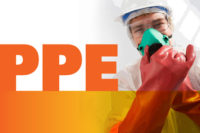 One in three American schoolchildren attends school within the danger zone of a hazardous chemical facility, according to a report by the Center for Effective Government. The advocacy group has produced a new interactive map of the 48 lower states that illustrates the high-risk areas.
One in three American schoolchildren attends school within the danger zone of a hazardous chemical facility, according to a report by the Center for Effective Government. The advocacy group has produced a new interactive map of the 48 lower states that illustrates the high-risk areas.
19.6 million kids
Data the facilities must provide to the Risk Management Program of the EPA was used in the study, which concluded that that 19.6 million children in public and private schools within the vulnerability zone of at least one chemical facility.
Chemical factories, refineries, bleach manufacturing, water and waste water treatment, and other facilities that produce, use, or store significant quantities of certain chemicals identified as hazardous to human health or the environment must report to the program. Vulnerability zones are self-reported by each facility and represent the area around facilities that could be impacted by a chemical disaster. They vary in size from half a mile to more than 25 miles.
"We were shocked that a little more than 3,400 facilities around the country could put a third of all schoolkids in harm's way," said Katherine McFate, president and CEO of the Center for Effective Government. "If an explosion or chemical leak occurred at one of these facilities, the result could be catastrophic. This is an unacceptable situation, given that there are well-known and straightforward remedies that some companies have voluntarily implemented."
Using data from the EPA and the Department of Education, Kids in Danger Zones: One in Three U.S. Schoolchildren at Risk from Chemical Catastrophes reports other troubling facts:
- Half of the children who attend school near chemical facilities (10.3 million) are in more than one vulnerability zone, meaning that their school is near more than one high-risk facility.
- In 102 counties in 22 states, every single child attends a school in a chemical catastrophe danger zone.
- Ten chemical facilities each reported vulnerability zones that contain over 500,000 children; another 32 facilities reported zones containing between 250,000 and 500,000 children.
- California, Texas, Florida, Illinois, and New York, the states with the highest populations, had the largest numbers of children at risk from dangerous chemicals. In Utah, Rhode Island, Texas, Louisiana, and Nevada, more than 60 percent of children attend a school within a vulnerability zone.
West Texas explosion wasn't the last
The Center's Sean Moulton, director of open government policy, said, "A year and a half ago, the West, Texas fertilizer facility explosion destroyed three schools. Since then, we've seen a number of other chemical disasters that have caused deaths, injuries, and major property damage. It's time to get serious about keeping our kids safe – before a chemical catastrophe causes another tragedy."
The Center says the EPA should require all facilities to shift to using safer chemicals and technologies. Many facilities have done so voluntarily and their parent companies are still profitable. Facilities can also shrink their vulnerability zones by simply reducing the quantity of chemicals produced or stored. State and local governments can be part of the solution as well: they can ensure that new facilities with hazardous chemicals aren't sited near major population centers and are located far away from any schools and residential areas.
Smaller quantities, smart planning
"Solutions are readily at hand. Safer chemicals, smaller quantities of hazardous materials, and smart planning can reduce the chance that a chemical incident becomes a major disaster," Moulton noted.
The new interactive map is available online at http://tesla.foreffectivegov.org/KidsAndToxins/bin-release/. Visitors can zoom in to a particular local area to see if a child's school is within the vulnerability zone of a local chemical plant or storage facility. Users can also search the map by school name or facility name and learn how to take action to reduce their children's risks.
The related report is located at http://www.foreffectivegov.org/kids-in-danger-zones.


